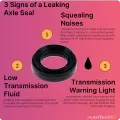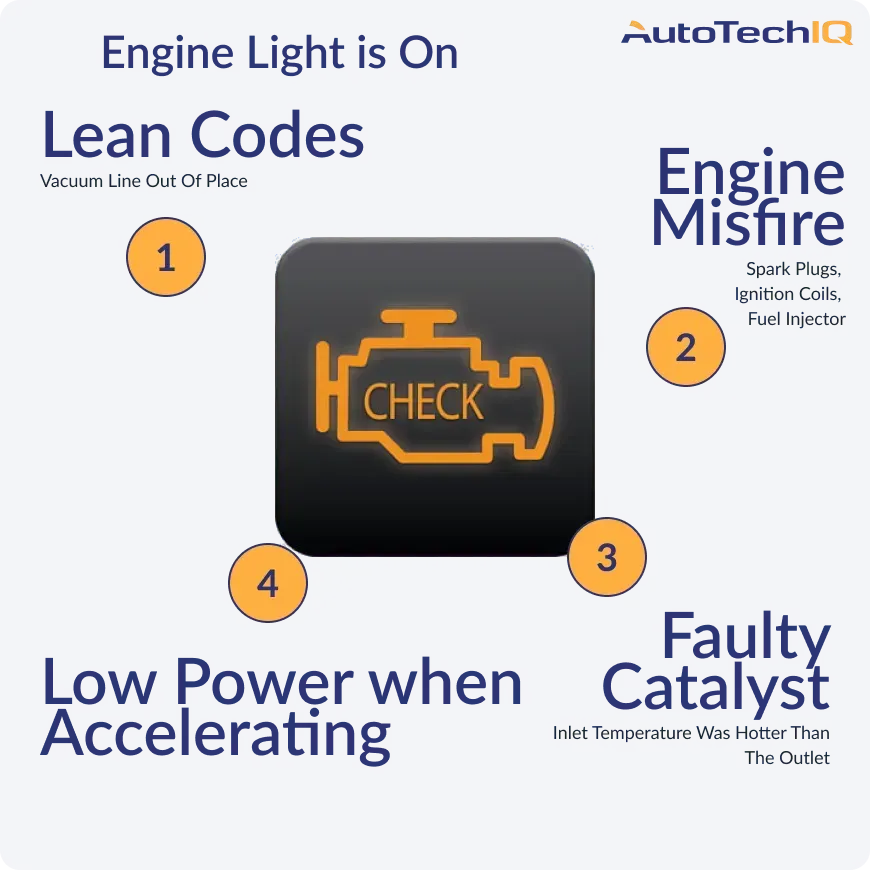
A car's check engine light is your car's way of saying, "Something's not right." The car's computer software changes how some inner systems work to circle around the issue and "rebalance" the vehicle's performance, making it seem perfectly fine. At the same time, the software is warning you to take action. This can range from faulty spark plugs to more complex issues, so take action to diagnose and address the issue for your car's health and safety.
Typically, a "check engine light on but car runs fine" situation doesn't mean you're out of troubled waters. A steady yellow light indicates a less urgent issue, while a flashing or red light signifies a more serious problem requiring immediate attention.
Serious Issues:
- Catalytic converter problems: This component cleans exhaust toxic emissions, and its failure can illuminate the warning light and worsen fuel efficiency. This component involves various others related to the emission system, like the oxygen sensor, which can also fail.

- Spark plug/ignition coil issues: Faulty spark plugs or coils can cause engine misfires, rough idling, and trigger the "check engine" dashboard light. The emission system is vital to the car's engine, so any issues like bad spark plug wires can trigger the engine light.

- Vacuum leaks: Air leaks into the engine can disrupt the air-fuel ratio, causing performance issues and triggering the light.

Minor Issues:
- Loose gas cap: This is the most common culprit and easily remedied. A loose cap allows fuel vapors to escape, triggering the light. Tighten the cap firmly so the fuel tank doesn't lose gas and see if the light disappears when driving again.

- Faulty sensor: Sensors monitor various engine functions, even inside the gas tank, and a malfunctioning one can trigger the light even if it doesn't affect performance. Oxygen sensors, mass airflow sensors, and coolant temperature sensors, all related to the engine combustion process, are common culprits.

- EVAP system issues: The evaporative emissions system controls fuel vapors, and a leak or malfunction can trigger the light. The vehicle's exhaust system is a vital part of it.
Recommended Action:
- If the check engine light turns on your dashboard, notice the engine performance signs. You'll probably see a gradual decline in your vehicle's reliability. Notice the symptoms to discuss them later with a professional.
- Get your car diagnosed by a professional near you: They will first perform a Digital Vehicle Inspection, then diagnose the problem and recommend the best course of action.
Other news
-
Car is Squealing When Driving
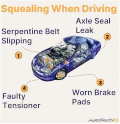
-
What is Preventative Maintenance and What Are The Benefits of it?

-
JobViewIQ - DVI Process Training - Part of the Auto Care Alliance Benefits

-
7 Signs of AC Pulley Issues
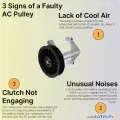
-
7 Signs of Clogged AC Components
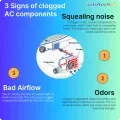
-
How Much Does a Transmission Fluid Change Cost?

-
7 Signs of a Leaking Axle Seal
